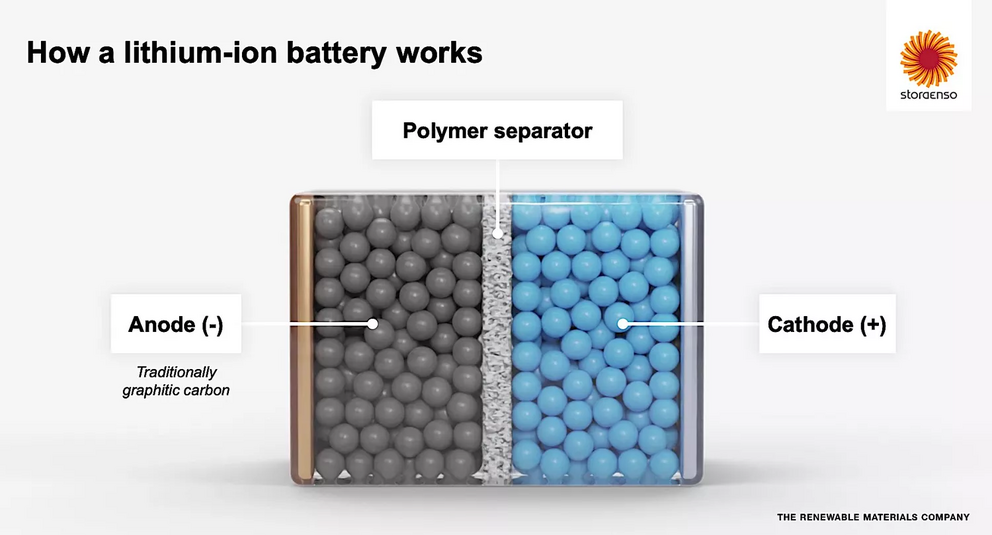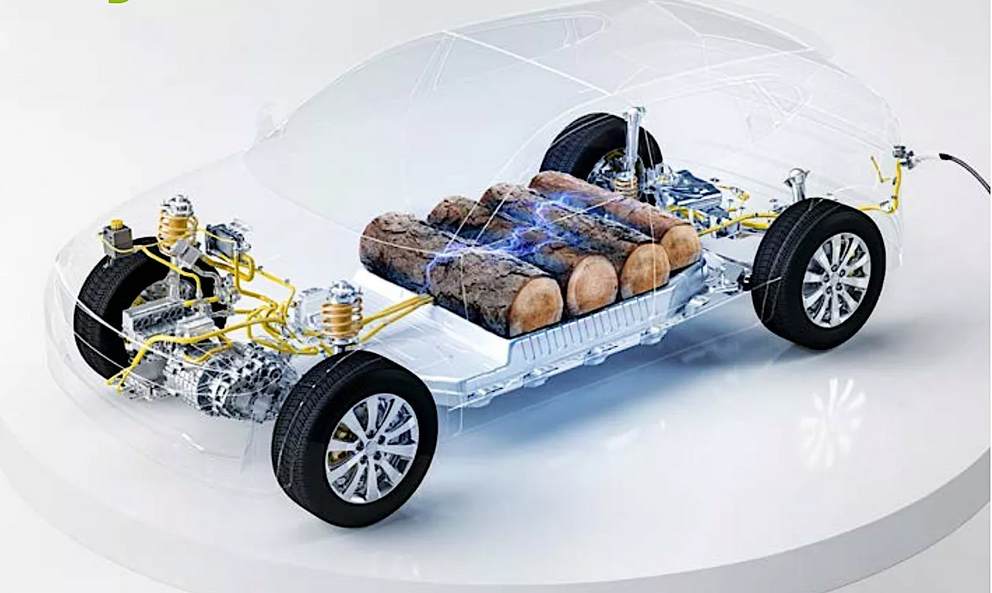This battery made partly from pine trees can power up EVs
A Stora Enso battery with wood-based carbon.
The woody wagon is back!
Woody Wagons, or woodies, were station wagons originally designed to move people from train stations to resorts that were beloved by surfers in the '60s. The woody wagon of the 21st century might have wood inside instead of outside, in the form of an electric car powered by batteries made with wood.
We call the batteries that power our cars, computers, and e-bikes "lithium-ion," but almost 30% of the battery is graphite, a natural form of nearly pure carbon. Earlier this year, the Finnish forestry company Stora Enzo announced it developed a replacement for the carbon now used in batteries, noting that China controls 84% of the natural graphite supply and that much of the balance was synthetic graphite made from fossil fuels.1
This could be a problem down the road. "In the future, the availability of materials might face a drastic drop, as policy interventions driven by climate change concerns further increase the electrification trend," said Otto Kivi, the senior business development specialist in battery materials at Stora Enso.

When a lithium-ion battery is charged, the ions move from the positively charged cathode to the negatively charged carbon anode, where they are stored until the battery is discharged.
Stora Enso makes its carbon from lignin, a natural polymer that acts as reinforcing bars for trees. It is separated from the cellulose in trees during paper-making to prevent the paper from yellowing. There is a lot of it: Trees are 30 to 40% lignin. The company used to just burn it for heat and energy but has started turning it into Lignode—a hard carbon developed for batteries.
 Powder is turned into sheets, which is then turned into batteries.
Powder is turned into sheets, which is then turned into batteries.
They take the lignin from pine and spruce trees and refine it into a fine carbon powder, which is then pressed into electrode sheets. They are turning what was previously waste into a useful product without harvesting any additional trees, and they claim that it makes a better battery:
"Traditionally graphite is used, and that material is strictly layered – the ions can only enter and exit from the sides of the graphite. With hard carbon made from Lignode, the anode material is disorganized, becoming a highly open structure which makes faster charging and discharging possible. Hence, the time spent at charging points can be reduced, giving Lignode the potential to act as a differentiator for EV manufacturers and battery suppliers alike."
"As EVs become more common, the need for charging infrastructure increases," said Kivi. "A clear advantage is that the structure of Lignode enables the battery to be charged and discharged faster than with graphitic carbon. Faster charge rates reduce the demand for charging infrastructure and enable solutions for smaller batteries per car. Currently, a lignin-based anode is the cheapest way to increase charge rates."
Stora Enso says the material is sustainable and renewable, from trees certified to the FSC and PEFC standards. The company recently signed a deal with Beyonder, a Norwegian energy storage company that manufactures high-performance batteries, to put Lignode into their products.
 Those don't look like batteries.
Those don't look like batteries.
Their white paper on the battery—with the aggressive title, "The Future of Electric Cars Is Powered By Trees"—shows a bunch of logs instead of batteries, which is a bit silly. But a battery that's essentially 30% wood isn't silly at all.
 A plywood race car.
A plywood race car.
Stora Enso, which also makes plywood, should consider putting it into cars as well, as was done in the 1920s and later in this plywood racing car designed by Frank Costin, who had a "steadfast belief in the superiority of plywood chassis construction" for cars.

Or, they could bring back the woodie. Fill it with Lignode batteries, and we might finally have a car that a Treehugger could love.
Fact checked by Haley Mast
For full references please use source link below.

